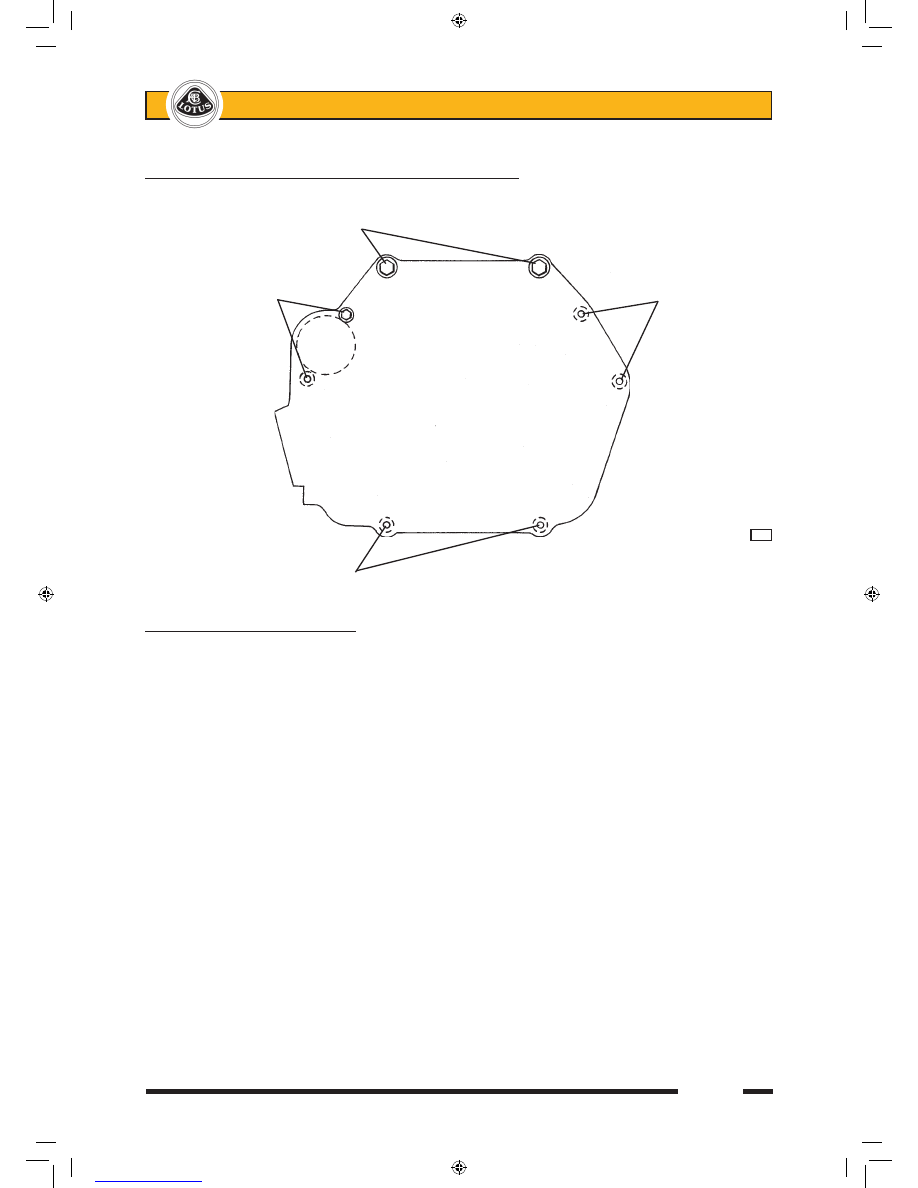Lotus Elise / Lotus Exige. Manual - part 49

Page 15
Lotus Service Notes
Section FJ
FJ.6 - TRANSMISSION OVERHAUL
The overhauling of the Toyota supplied type C64 transmission, is detailed in separate publication
D120T0327J which may also be used for guidance with the C56. Special tools are available through Lotus
under the following part numbers:
Transmission Special Tools
Description Lotus Part No.
Press Dolly, driveshaft bearing
T000T11438F
Press Dolly, driveshaft bearing shield
T000T1439F
Oil Seal Puller
T000T1445S
Differential Preload Adaptor
T000T1446S
5th/6th Gear Puller Kit
T000T1447
comprises:
Upper Plate
T000T1447/1
Centre Bolt
T000T1447/2
Arm (x3)
T000T1447/3
Adaptor
T000T1447/4
5th/6th Synchro Hub Puller Kit
T000T1448
comprises
Hanger
T000T1448/1
Slide Arm (x2)
T000T1448/2
Centre Bolt
T000T1448/3
Claw no.2 (x2)
T000T1448/4
Holder
T000T1448/5
Output Shaft Seal Replacer Dolly, LH
T000T1459F
Output Shaft Seal Replacer Dolly, RH
T000T
Output Shaft Seal Replacer Handle
T000T1460F
Clutch housing to engine fixings - viewed from gearbox side
M12x55 flange head bolts to block; 64 Nm
M10x65 bolts also secure M10x55 bolts to
starter motor; 37 Nm block; 37 Nm
f134
M10x30 bolts to sump; 23 Nm
sn_fj_cyclone.indd 15
03/07/2006 15:06:34